Reactivity of Ashes: Effect of Porosity and Particle Size
| ✅ Paper Type: Free Essay | ✅ Subject: Engineering |
| ✅ Wordcount: 746 words | ✅ Published: 31 Aug 2017 |
Objective: Discuss the effect of porosity, particle size, shape and distribution on reactivity of ashes.
- Rice Husk Ash
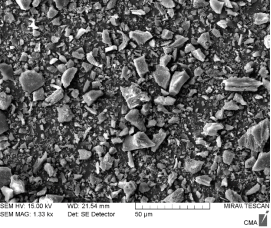
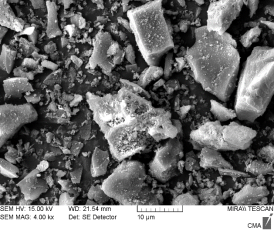
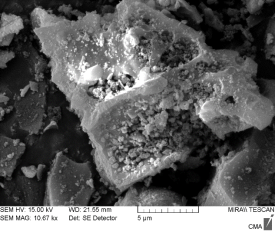

The particle size rice husk ash is around 5 micron to 95 micron with average particle size of 25 micron with high percentage of silica. The presence of silica in RHA has been known since 1938 and an extensive literature search has highlighted many uses of RHA as silica replacement. Two main industrial uses have been identified: as an insulator in the steel industry and as a poz- zolan in the cement industry. RHA is used by the steel industry in the production of high quality flat steel. Moreover, RHA is an excellent insulator, having low thermal conductivity, high melting point, low bulk density and high porosity. In particular, there are two areas for which RHA is used: in the manufacture of low cost building blocks, and in the production of high quality cement. The addition of RHA to cement has been found to enhance cement properties. In general, concrete made with Portland cement containing RHA has a higher compressive strength. RHA is finer than cement having very small particle size of 25 microns, so much so that it fills the interstices in between the cement in the aggregate. That is where the strength and density comes from.
- Incinerator Bottom Ash 1
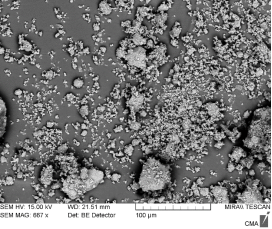
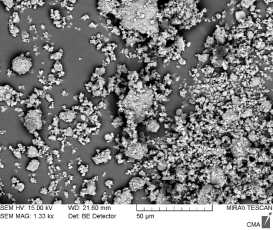
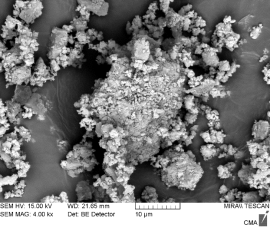
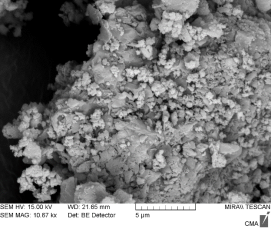
This sample was imported from Portugal. Upon magnification, agglomerated and irregularly shaped amorphous particles were detected in the bottom ash samples associated with aggregates of polycrystalline, amorphous, and glassy material. The results show that the predominant elements in bottom ash samples were silicon (Si), aluminium (Al), iron (Fe), and calcium (Ca) as oxides, while the predominant elements in all spot points on surface texture of bottom ash. High silica and alumina content in bottom ash could make it a good sorbent while high CaO content is responsible for its alkaline character. It was found that the material was mainly amorphous in nature but also indicated the presence of crystalline phases such as feldspar, mullite, magnetite, and quartz. Bottom ash particles smaller than 11.2 mm accounts for approximately 80 % by mass. About 5 – 10 % bottom ash particles are between 0.1 µm and 100 µm. These particles are quite porous and look like volcanic lava. One of the most common uses for bottom ash is as structural fill. There is possibility of bottom ash being used as substitute/replacement of fine aggregate (sand). Its use in concrete becomes more significant and important in view of the fact that sources of natural sand as fine aggregates are getting depleted gradually, and it is of prime importance that substitute of sand be explored. The ash shows lower density, higher water absorption, and lower strength than natural gravel. They could be considered as average quality aggregates for use in concrete. When directly introduced in concrete, they led to swelling and cracking of specimens, due to the reaction between cement and metallic aluminium. Therefore, a treatment by sodium hydroxide was proposed to avoid such degradation, which made possible the partial replacement (up to 50%) of fine gravel in concrete without affecting the durability.
- Incinerator Bottom Ash 2
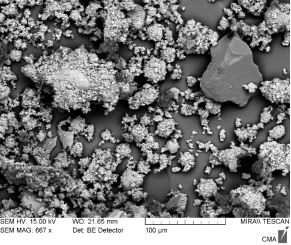
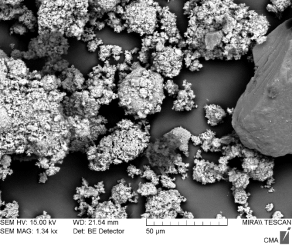
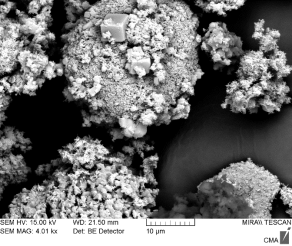
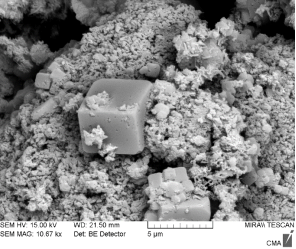
This sample was imported from Czech Republic.
- Hard Wood Ash
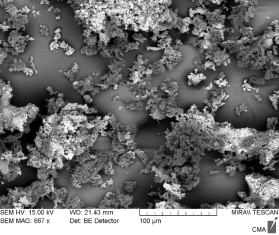
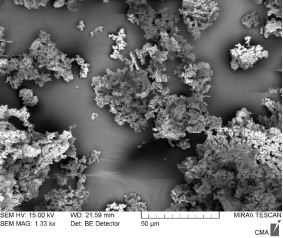

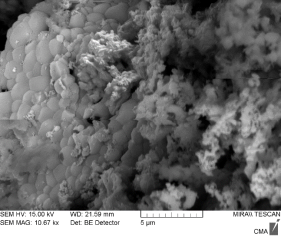
Quantity and quality of wood ash may vary with many factors such as combustion temperature, species of wood and combustion technology used. Hence proper analysis of wood ash is important before its application in concrete. Wood ash chemical characteristics differ with species of wood but chiefly contains lime and silica. The size of wood ash varies from 45 micron to 75 micron. The particles of wood ash are little coarser than that of cement and have higher specific surface as compared to cement due to porous nature and irregular shape. Hard wood ash contains carbon (5-30%). Calcium (7-33%), potassium (3-4%), magnesium (1-2%), manganese (0.3-1.3%), phosphorus (0.3-1.4%) and sodium (0.2-0.5%) are the major constituents of wood ash. With increasing carbon content, density of wood ash decreases Incorporation of wood ash as partial replacement of cement adversely decreases the slump of concrete. Water absorption of concrete increases with the increase in wood ash percentage. There was marginal decrease in strength with increasing wood ash percentage in concrete, but increased with age due to increased pozzolanic reactions. Wood ash at replacement percentage up to 10% of the weight of binder can be successfully used as additive in place of cement to produce structure grade concrete. Replacement of cement by wood ash does not have negative impact on the chloride permeability. There is a significant decrease in the drying shrinkage on the incorporation of wood ash.
Cite This Work
To export a reference to this article please select a referencing stye below:
Related Services
View allDMCA / Removal Request
If you are the original writer of this essay and no longer wish to have your work published on UKEssays.com then please click the following link to email our support team:
Request essay removal


